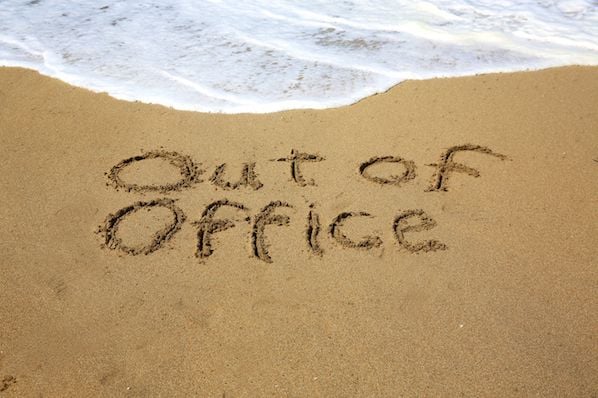Picture:

Instead of simply noting a return date, some out-of-office replies have morphed into mini manifestos – playful, cutting or occasionally self-important. Photo: Stock.
Gary Martin says the once-simple out-of-office reply to messages has developed into a creative performance – which does nothing for the temper of those who need to get in touch.
This is the time of the year when many of us are putting up our out-of-office reply to incoming messages and heading off to our much-anticipated holiday destination.
It is a seasonal ritual many workers nationwide perform with care, crafting an automated message to let everyone know “I’m outta here” – the last step between them and a blissful break.
The out-of-office reply (I’ll call it OOO for the sake of brevity) used to be a simple courtesy: a short, polite note letting others know they would be waiting until a certain date for a response.
However, over the years, much like the workplace itself, the OOO has evolved from a dry notification into a creative declaration, each message a little performance in itself. In fact, today’s OOOs are often less informative and more personal statements, ranging from the light-hearted to the borderline condescending.
Instead of simply noting a return date, some OOO replies have morphed into mini manifestos – playful, cutting or occasionally self-important.
Consider, for instance, the OOO reply that lists half a dozen colleagues to contact in the sender’s absence, reinforcing the importance and complexity of their role. When you contact one of the other colleagues, the odds are good you will receive another OOO.
Then there is the classic ‘’regretful’’ message that sounds more like a boast: “I’m currently on holiday in Hawaii and regrettably won’t be able to respond until I return.” Translated, this says sorry but not sorry.
Other OOOs are delightfully unsubtle, like the one that declares: “Unless you’re Chris Hemsworth, Margot Robbie or the Premier, I’ll get back to you in six weeks.” The message makes the point that not all emails are created equal and yours is one of those that will have to wait.
Some workers craft OOOs that seem designed to stoke envy: “Thank you for your email, but I’m enjoying the Greek Isles and will have only limited internet access these next eight weeks.” Meanwhile, their Instagram stories reveal constant Wi-Fi access, complete with a steady stream of seaside selfies, suggesting that limited connectivity is hardly an issue.
There are also attempts at humour, some of which miss the mark: “I’m on leave, hoping to win the lottery and never return” or “In an emergency, dial triple zero”.
Then there is the dark humour variety: “Currently having my brain removed so I can be promoted to management.”
Perhaps the pièce de résistance of ‘’evil’’ OOOs is the reply that informs you any emails received during their period of absence will be deleted and you should “resend your message when I return”.
More frustrating, however, is the rise of the non-OOO reply – the decision not to set up an automated message at all. Left wondering whether their email has disappeared into cyberspace, senders are forced to guess whether the recipient is away, creating an air of mystery and maybe a bit of annoyance.
So, if you are crafting an OOO reply this year, maybe skip the temptation for a grand performance.
Gary Martin is a former academic turned social trends and workplace specialist, keynote speaker and newspaper columnist. He is currently chief executive of the Australian Institute of Management in Western Australia.


